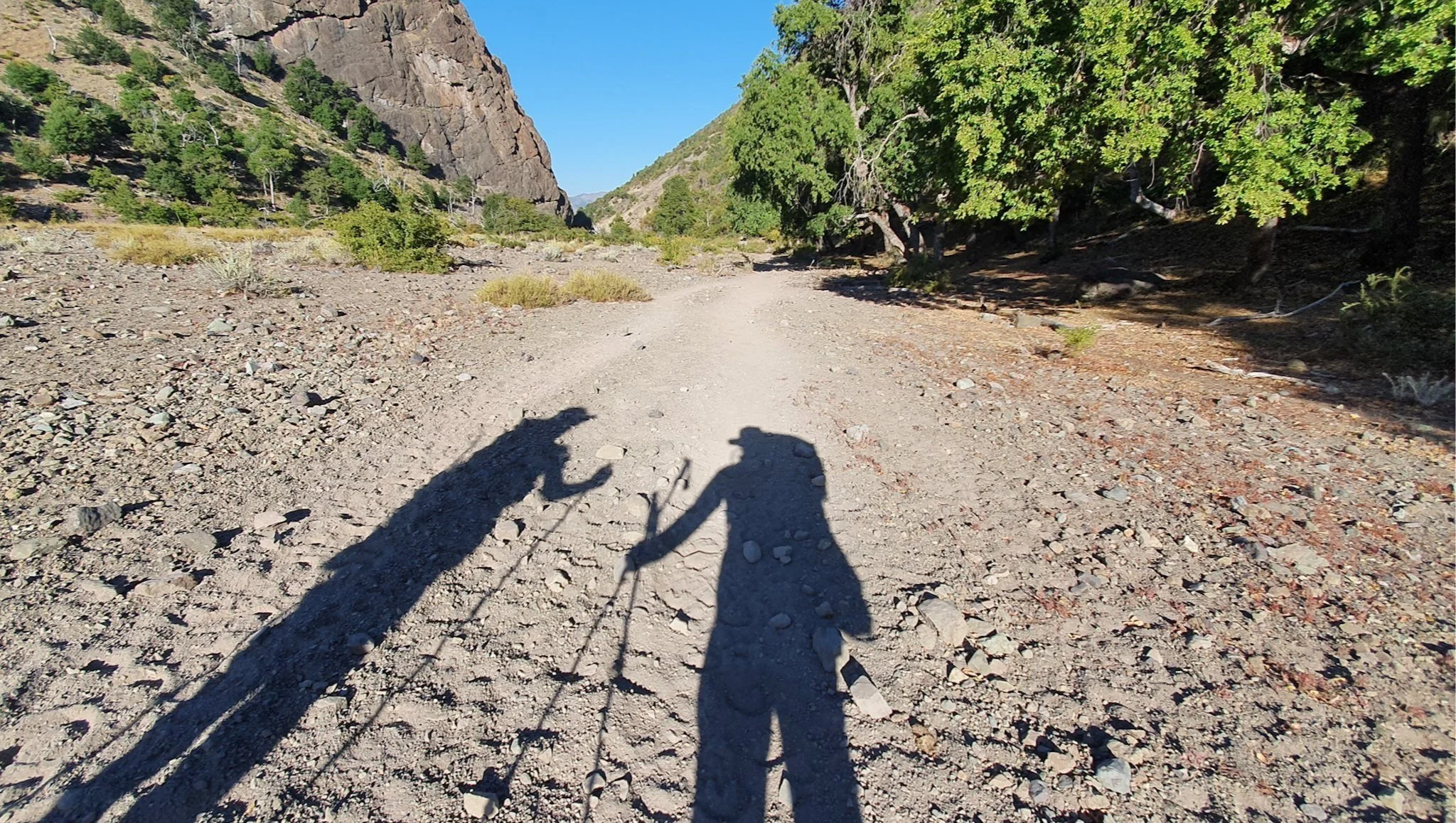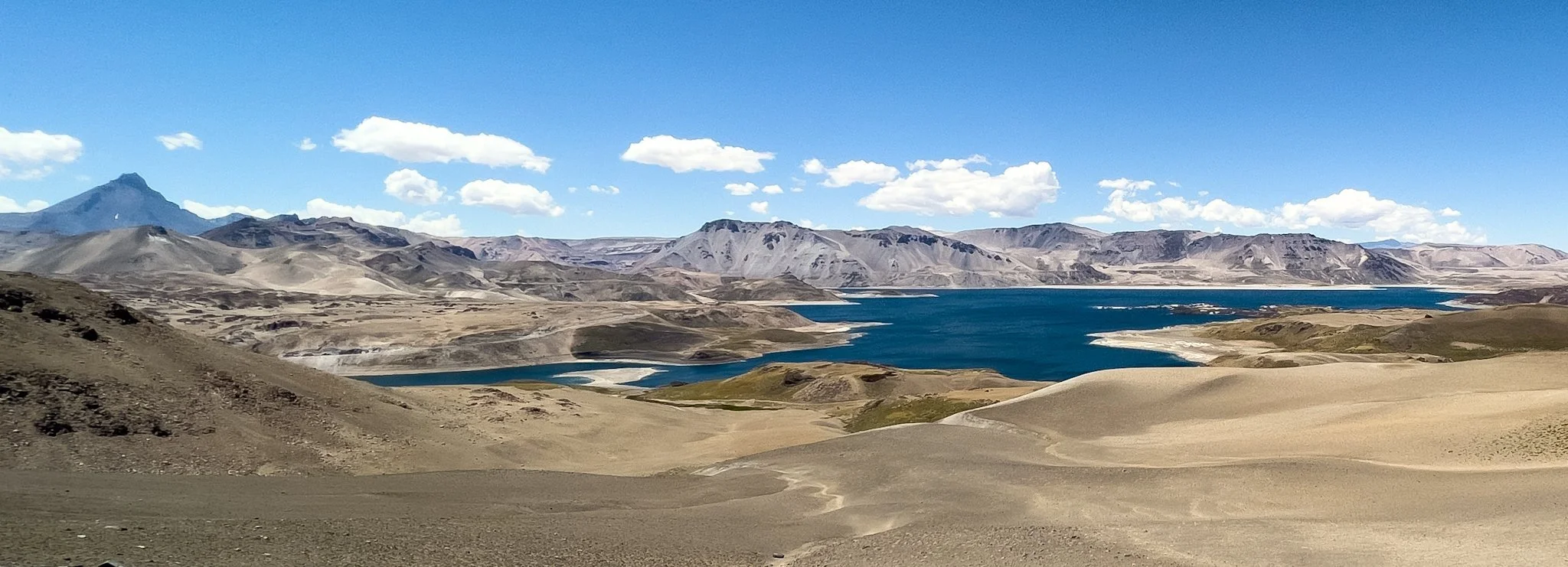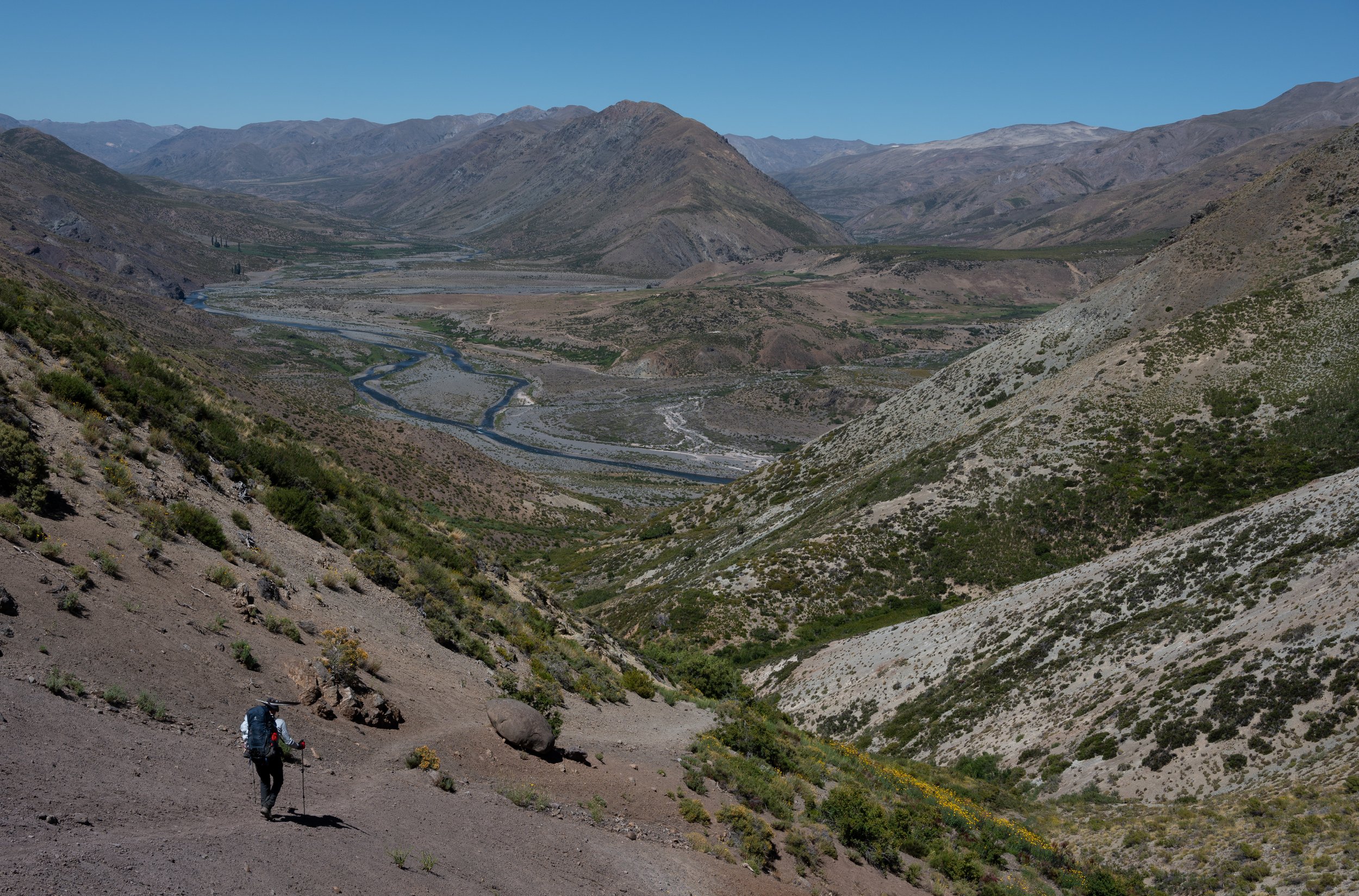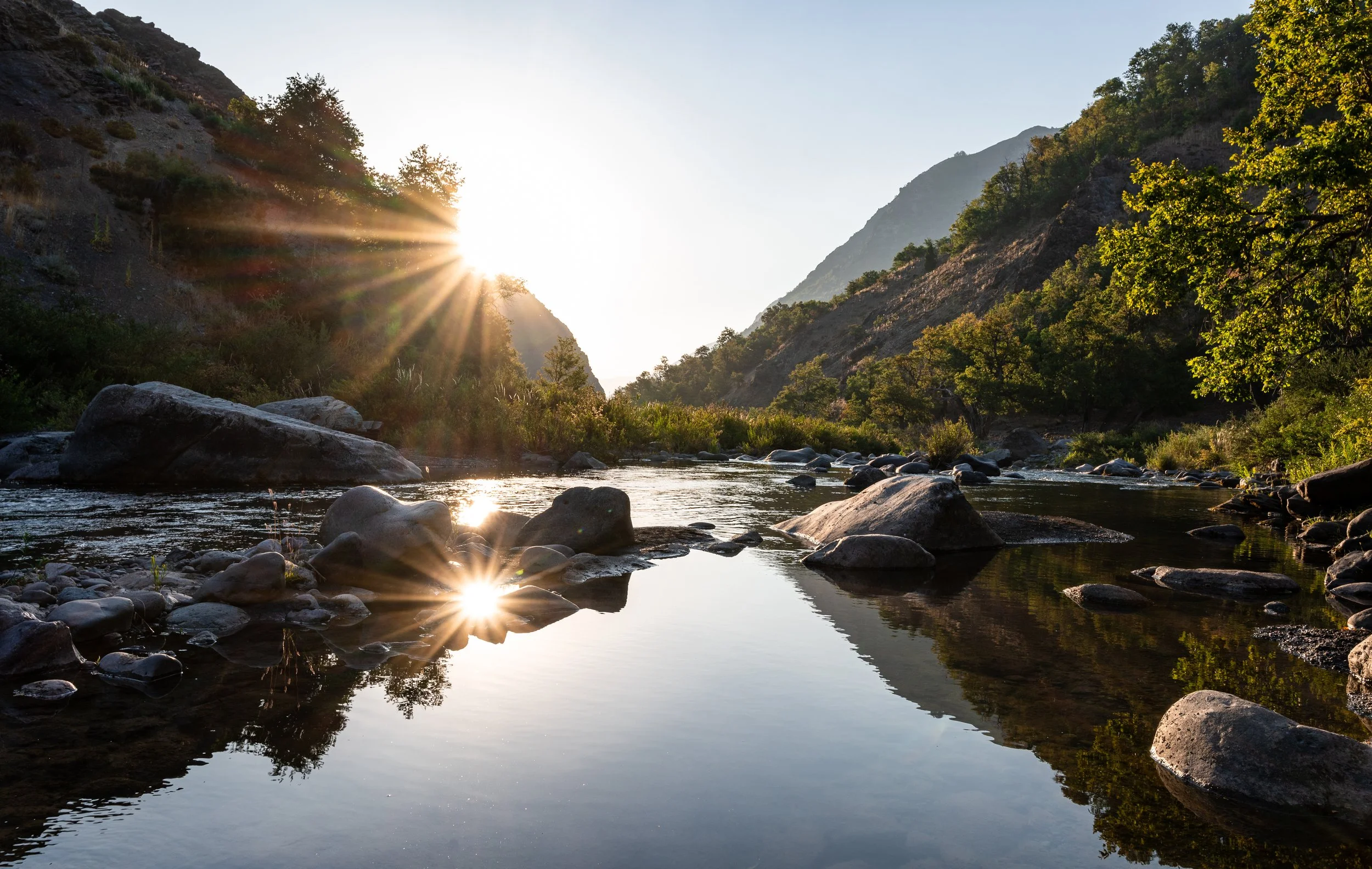WHERE THE DESERT MEETS THE FOREST
When the volcanic sand meets green trees it creates a beautiful contrast. Two Slovenians wandering between the inorganic and organic world.
The new stage began where the last one ended—in the desert near Lago del Maule, a vast lake formed inside the caldera of an extinct supervolcano…
-
To reach it from El Medano, where we spent the night, we hitchhiked along the asphalt road and registered at the Chilean border, Paso Pehuenche, which closed due to the pandemic.
From the international boundary, we trekked back into Chile, passing through the homeland of the arrieros and wandering through endless valleys. Our journey took us up and down to the main natural attraction of this stage—Laguna del Dial, a 6.8 square kilometre glacial lake. It's said to be full of oversized trout, but either our poor fishing equipment or our lack of fishing skills kept us from grilling a giant catch over the fire.
Fortunately, luck was on our side. On the first day, my father found a condor feather, which he now considers a lucky totem. He believes it allows him to communicate with Pacha Mama (Mother Earth). Believe it or not, whenever he wishes for wind, a gentle breeze cools us down; when he says he's thirsty, we soon find a cold spring. He even wished for a cold beer, and warm-hearted local tourists invited us to join their picnic.
Let’s hope that Pacha Mama continues to watch over us…
This is just a portion of Laguna del Maule, captured during the dry season. The lake's total surface area exceeds 60 square kilometers.
We’re entering one of the endless valleys we've been trekking through. You might notice the condor feather on my father’s hat—it has become his trekking totem.
For the first time on the trail, we had the chance to camp on green grass instead of the usual shades of sand.
Finally reching Lagun del Dial, where we were able to take a swim.
The sun sets over Laguna del Dial, and the temperature drops quickly after dark.
Arrieros, known as Gauchos in Argentina, are men who spend the summer in the mountains, staying in improvised shelters. Their job is to care for and fatten the livestock of various landowners or farmers who employ them.
The last valley we walked through on this stage was completely different from all the others. The forest provided shade, and the greenery was a refreshing sight for our eyes.
Camping next to Rio Gonzáles was probably the best spot so far.









